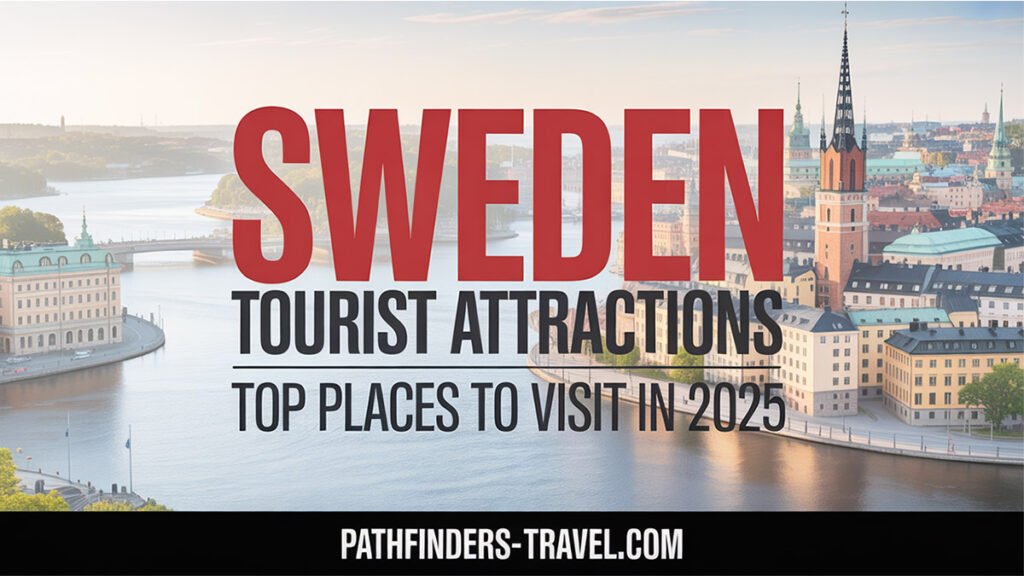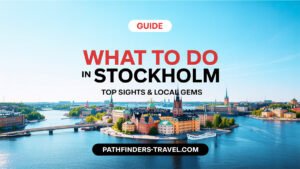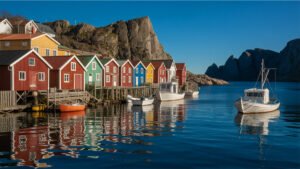Estimated reading time: 15 minutes
Key Takeaways
- Stockholm, Sweden’s capital, offers a perfect blend of historic charm and modern innovation across its 14 islands
- The Stockholm Archipelago features over 30,000 islands and is ideal for boat tours, kayaking, and experiencing authentic coastal life
- Medieval Visby on Gotland island showcases well-preserved city walls and cobblestone streets dating back centuries
- Sweden’s historic castles like Borgholm, Kalmar, and Örebro offer fascinating glimpses into the country’s royal past
- The Arctic north provides unique experiences including the Ice Hotel, Northern Lights, and Midnight Sun phenomena
Table of Contents
- Introduction
- Stockholm – The Enchanting Capital
- Stockholm Archipelago
- Visby, Gotland – A Step Back in Time
- Royal Castles and Fortresses
- Coastal Cities and Maritime Heritage
- Engineering Marvel: Öresund Bridge
- The High Coast and Inland Wonders
- The Arctic North: Ice Hotel, Kiruna, and Abisko National Park
- Frequently Asked Questions about Sweden Cities and Destinations
- Conclusion
Introduction
Sweden stands as a Nordic gem that beautifully combines untouched wilderness, rich history, and modern innovation. For travelers searching for what to see in Sweden and Sweden tourist attractions, this Scandinavian nation offers a remarkable variety of experiences that satisfy every type of explorer. From the medieval cobblestone streets of its cities to the pristine Arctic wilderness of the north, Sweden presents a tapestry of cultural and natural wonders waiting to be discovered.
This comprehensive guide covers the top destinations, tourist attractions, and must-visit places in Sweden, setting the stage for your perfect trip planning. Whether you’re drawn to historic castles, coastal archipelagos, or the dancing Northern Lights, this journey through Sweden maps out these diverse attractions, offering inspiration for a culturally rich Swedish itinerary. [SOURCE]
Want to see this for yourself? Click here to jump to the video in UHD 4K Resolution.
Stockholm – What to See in Sweden’s Capital City
Stockholm, often referred to as the “Venice of the North,” is a city elegantly spread across 14 islands connected by more than 50 bridges. This unique layout creates a stunning blend of water and cityscape that makes Stockholm one of the most beautiful capitals in the world. [SOURCE]
At the heart of the city lies Gamla Stan (Old Town), a well-preserved medieval district dating back to the 13th century. This historic center is home to narrow winding streets, colorful buildings, and some of the most significant Sweden tourist attractions. The Royal Palace, an impressive baroque building with over 600 rooms, stands as a testament to Sweden’s monarchical heritage. Nearby, the Riddarholmen Church serves as the final resting place for Swedish monarchs, its cast-iron spire a distinctive landmark on the Stockholm skyline. [SOURCE]
For those wondering what to see in Sweden, Stockholm offers plenty beyond its historic center. The hip neighborhood of Södermalm is known for its indie shopping scene, creative atmosphere, and trendy cafés perfect for experiencing the Swedish tradition of fika (coffee break). Meanwhile, the Vasa Museum houses a remarkably preserved 17th-century warship that sank on its maiden voyage and was salvaged after 333 years underwater – a truly unique historical treasure. [SOURCE]
Stockholm’s charm changes with the seasons. Winter brings pastel skies and a magical atmosphere to the city, while summer offers nearly endless daylight hours perfect for exploring Stockholm’s many attractions and enjoying outdoor dining along the waterfront.
Stockholm Archipelago – Islands, Boat Tours, and Coastal Life
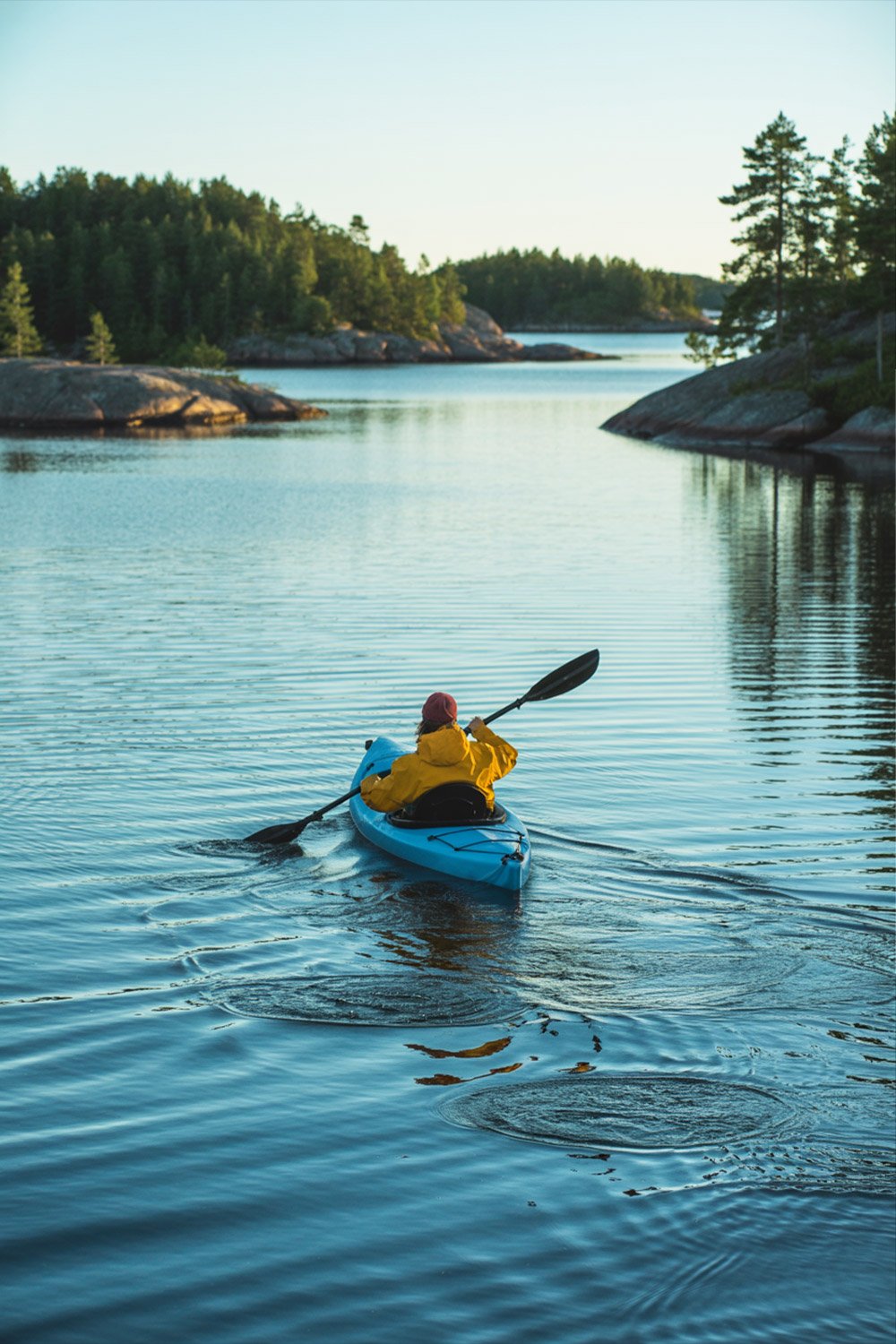
Just beyond the city limits of Stockholm lies one of Sweden’s top destinations – the breathtaking Stockholm Archipelago. This remarkable maritime landscape consists of more than 30,000 islands, islets, and skerries stretching eastward into the Baltic Sea. [SOURCE]
Exploring this island wonderland by boat offers a unique perspective on Swedish coastal life. Ferries and tour boats regularly depart from Stockholm, making the archipelago accessible even for day trips. Visitors can discover quaint fishing villages with brightly painted wooden houses, secluded coves perfect for kayaking, and pristine beaches where the only footprints might be your own.
Islands like Vaxholm, with its historic fortress, serve as gateways to the archipelago, while more remote destinations such as Sandhamn offer authentic maritime experiences far from the bustle of city life. Many islands feature charming restaurants serving fresh local seafood – a true delight for culinary enthusiasts seeking authentic Swedish flavors.
The archipelago represents some of the most beautiful Sweden travel destinations, with each island having its own distinct character. Whether you’re seeking outdoor adventure, peaceful nature experiences, or simply a refreshing escape from urban environments, the Stockholm Archipelago delivers unforgettable memories.
Top Picked Activities in Stockholm Archipelago
Visby, Gotland – A Step Back in Time
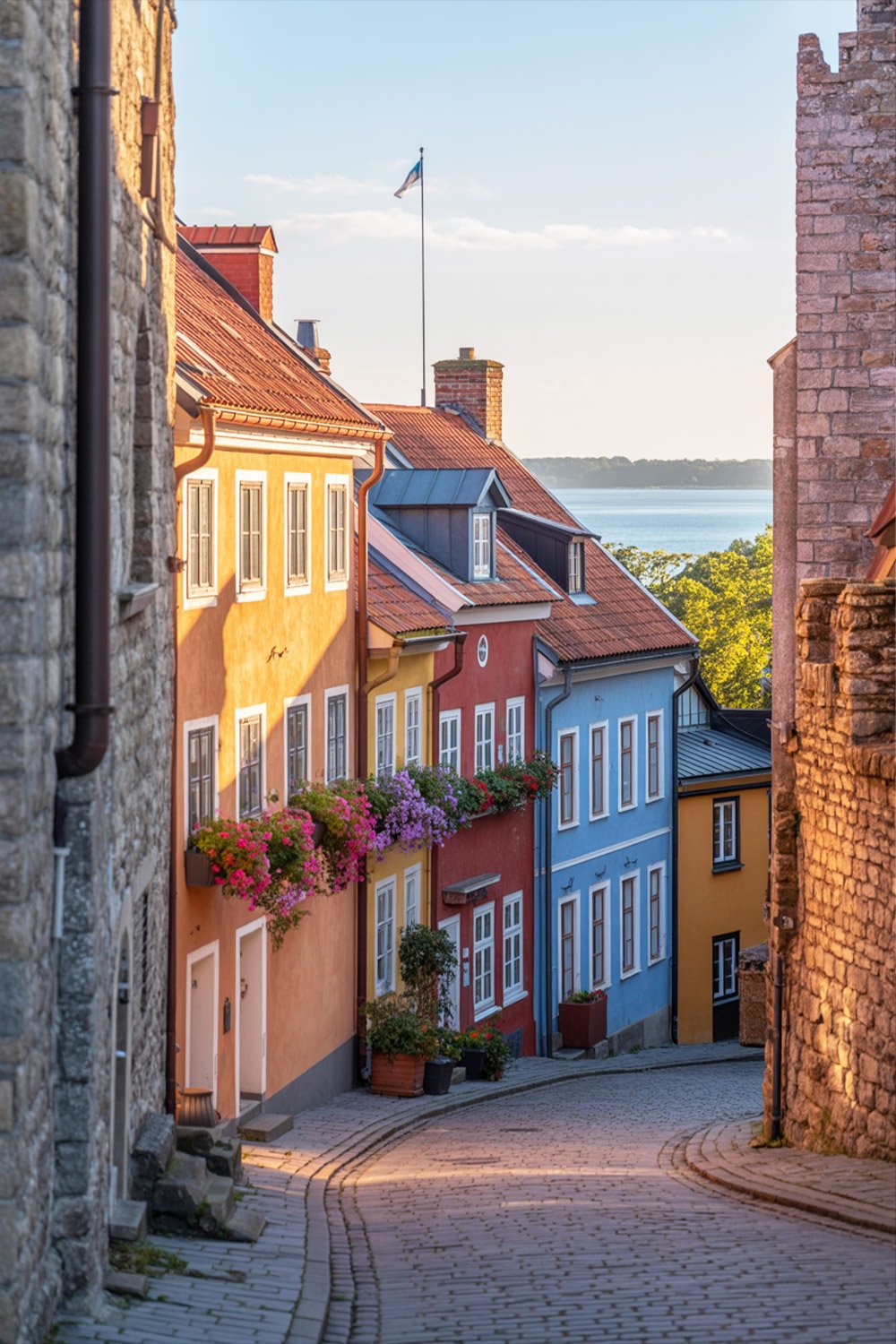
On the island of Gotland in the Baltic Sea, the medieval town of Visby stands as one of the must visit places in Sweden for history lovers. This remarkably preserved walled city has earned UNESCO World Heritage status for its intact medieval street plan and extraordinary collection of historic buildings. [SOURCE]
Visby’s city walls, dating from the 13th century, extend for 3.4 kilometers and are considered the best-preserved medieval city walls in Scandinavia. Inside, cobblestone streets wind between medieval church ruins, merchant houses, and flower-covered cottages, creating an atmosphere that truly feels like stepping back in time.
The town’s historical significance stems from its role as a key trading center in the Hanseatic League, a powerful medieval trading alliance. Today, visitors can explore this rich heritage through museums, guided tours, and the annual Medieval Week festival held each August, which transforms Visby into a living history experience complete with period costumes, markets, and tournaments.
Beyond the town, Gotland’s coastline features dramatic limestone formations called raukar (sea stacks), creating otherworldly landscapes that add to the island’s unique appeal. With its blend of fascinating history, architectural treasures, and natural beauty, Visby offers travelers an authentic glimpse into Sweden’s medieval past.
Royal Castles and Fortresses
Sweden’s landscape is dotted with magnificent castles and fortresses that stand as powerful reminders of the nation’s royal history. These historic structures rank among the most impressive Sweden tourist attractions and offer visitors a fascinating journey into the past. [SOURCE]
Borgholm Castle on the island of Öland presents visitors with imposing ruins perched dramatically on a hill. Originally built in the 12th century as a defensive stronghold, it later evolved into a Renaissance palace before being devastated by fire in the 19th century. Today, its weathered stone walls create a hauntingly beautiful silhouette against the Baltic sky, offering sweeping views and a tangible connection to Sweden’s past.
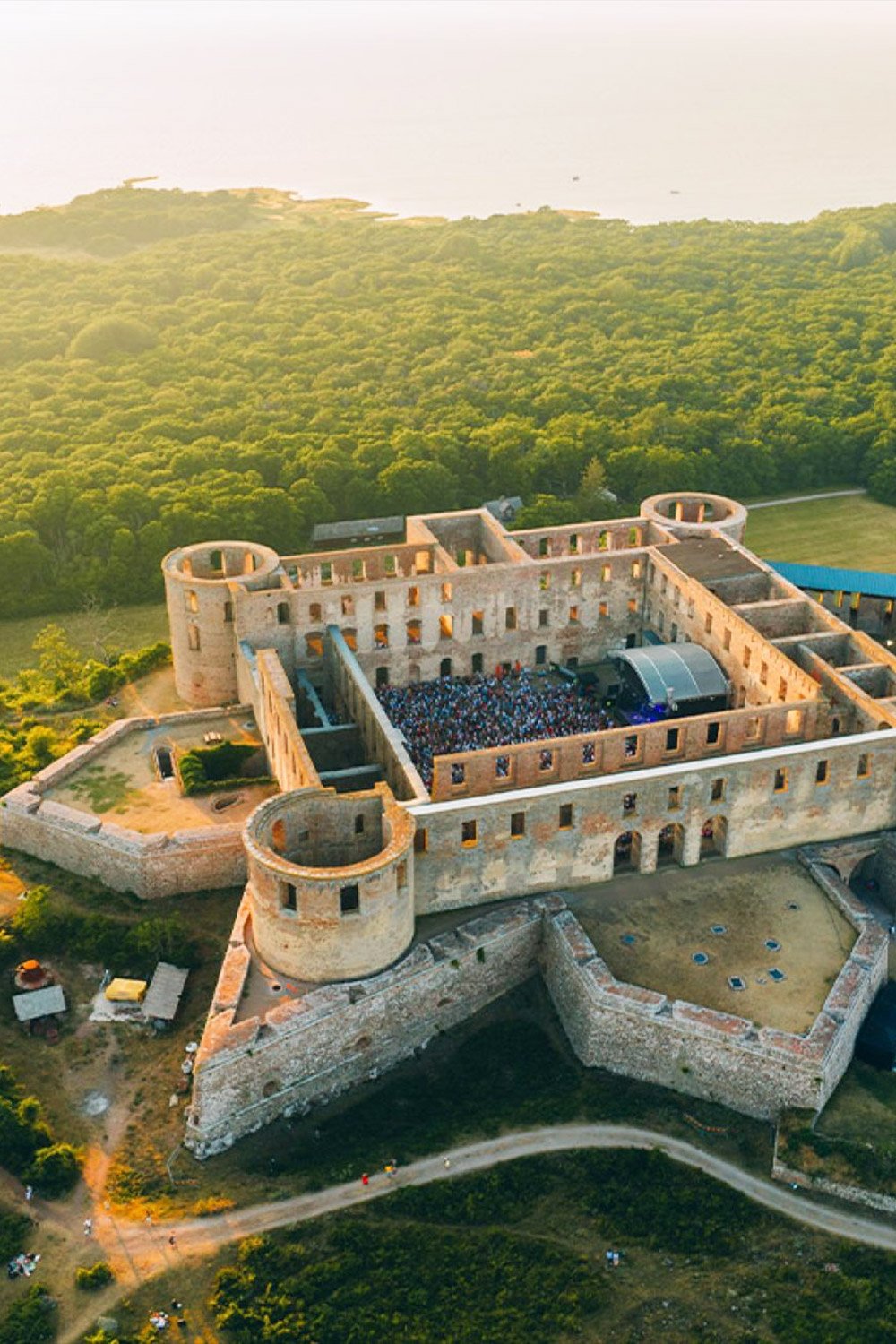
For those wondering what to see in Sweden with historical significance, Kalmar Castle stands as an exceptional example. This remarkably well-preserved fortress played a crucial role in the formation of the Kalmar Union, which united the Nordic countries in the late 14th century. With its Renaissance splendor, impressive towers, and meticulously restored interiors, Kalmar Castle offers visitors a vivid glimpse into royal life across different historical periods.
Örebro Castle, rising majestically from the waters of the Svartån River, represents another architectural treasure. Dating from the 13th century, this medieval fortress evolved over centuries to include Renaissance and Baroque elements. Today, it houses museums and exhibitions that bring Sweden’s rich history to life, making it an essential stop for history enthusiasts.
These historic fortresses not only showcase Sweden’s architectural heritage but also tell compelling stories of power, conflict, and cultural development throughout the centuries.
Sweden’s Coastal Cities and Maritime Destinations Guide
Sweden’s extensive coastline has given rise to vibrant cities with rich maritime traditions that today represent some of the country’s top destinations. These coastal gems combine historical significance with modern charm, offering visitors diverse experiences. [SOURCE]
Karlskrona, a UNESCO World Heritage site, stands as a monument to Sweden’s naval prowess. Founded in 1680 as the country’s primary naval base, the city features impressive shipyards, dry docks, and 18th-century fortifications. The Naval Museum and the wooden Admiralty Church provide fascinating insights into Sweden’s maritime history.
Gothenburg, Sweden’s second-largest city, combines its seafaring heritage with a vibrant cultural scene. Its Haga district charms visitors with wooden houses and cozy cafés, while the city’s extensive canal system invites exploration by boat. The waterfront areas have been transformed into modern spaces for dining, shopping, and entertainment, making Gothenburg a must-visit destination for travelers seeking urban sophistication with a maritime flavor.
Top Picked Activities in Gothenburg
In southern Sweden, Malmö showcases the perfect blend of historical architecture and cutting-edge design. The city’s landmarks range from the medieval Malmö Castle to the twisting Turning Torso skyscraper, Sweden’s tallest building. Its proximity to Denmark via the Öresund Bridge makes it a gateway city with a cosmopolitan atmosphere.
For those wondering what to see in Sweden that captures authentic coastal charm, the smaller towns of Smögen and Marstrand offer picturesque experiences. Smögen’s vibrant wooden boardwalk (Smögenbryggan) lined with colorful fishing huts has become an iconic Swedish summer destination, while Marstrand’s imposing Carlsten Fortress and sailing heritage attract visitors year-round.
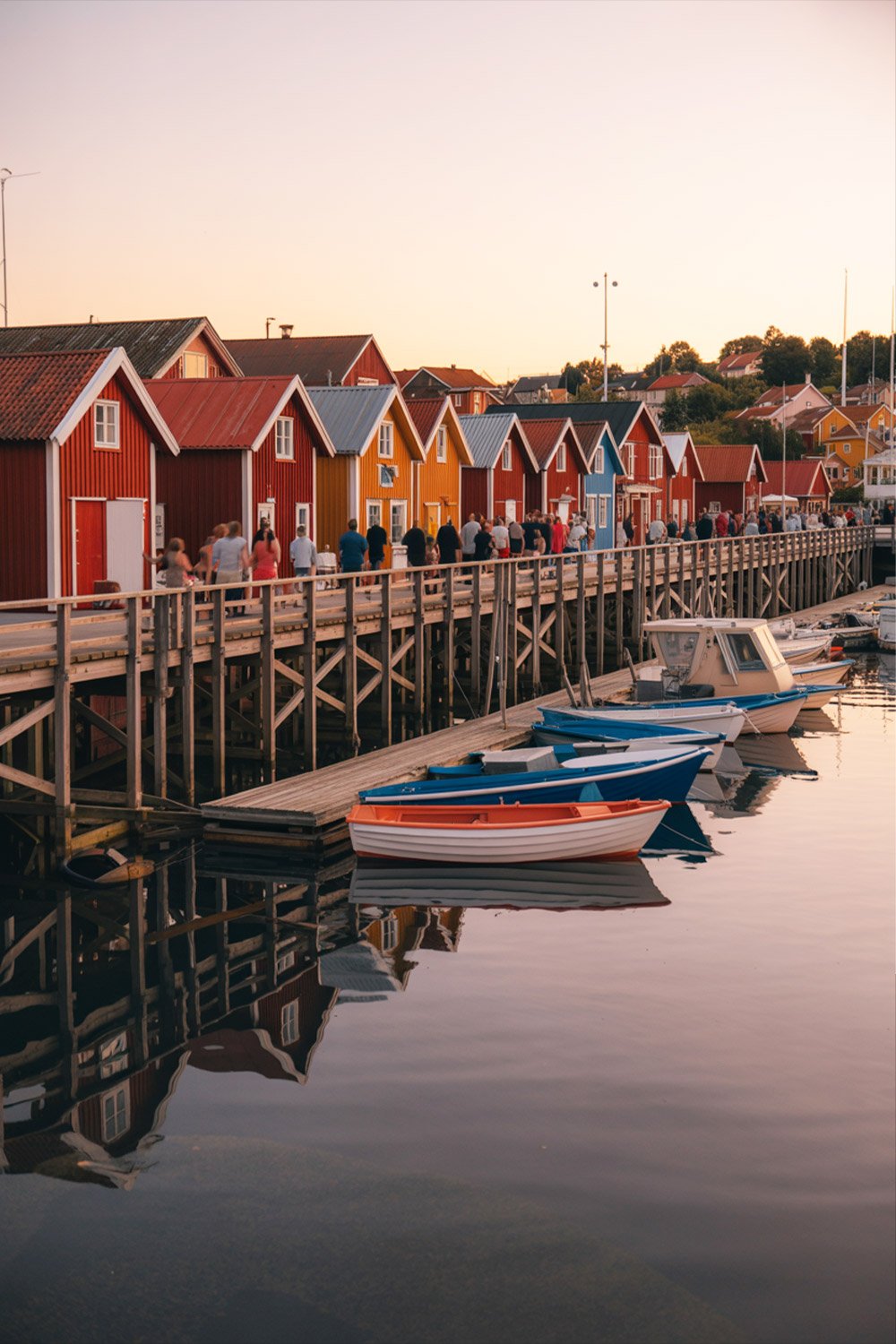
Helsingborg, with its medieval tower Kärnan and panoramic views across the narrow strait to Denmark, rounds out Sweden’s impressive collection of coastal urban destinations.
Engineering Marvel: Öresund Bridge
The Öresund Bridge stands as one of the most remarkable Sweden travel destinations for those interested in modern engineering achievements. This impressive structure physically and symbolically connects Sweden and Denmark, spanning the Öresund Strait between Malmö and Copenhagen. [SOURCE]
Opened in 2000, this 16-kilometer connection isn’t simply a bridge – it’s a complex transportation system consisting of a cable-stayed bridge, an artificial island (Peberholm), and an underwater tunnel. The bridge portion stretches for 8 kilometers before transitioning into the tunnel via the artificial island, creating a seamless journey between the two nations.
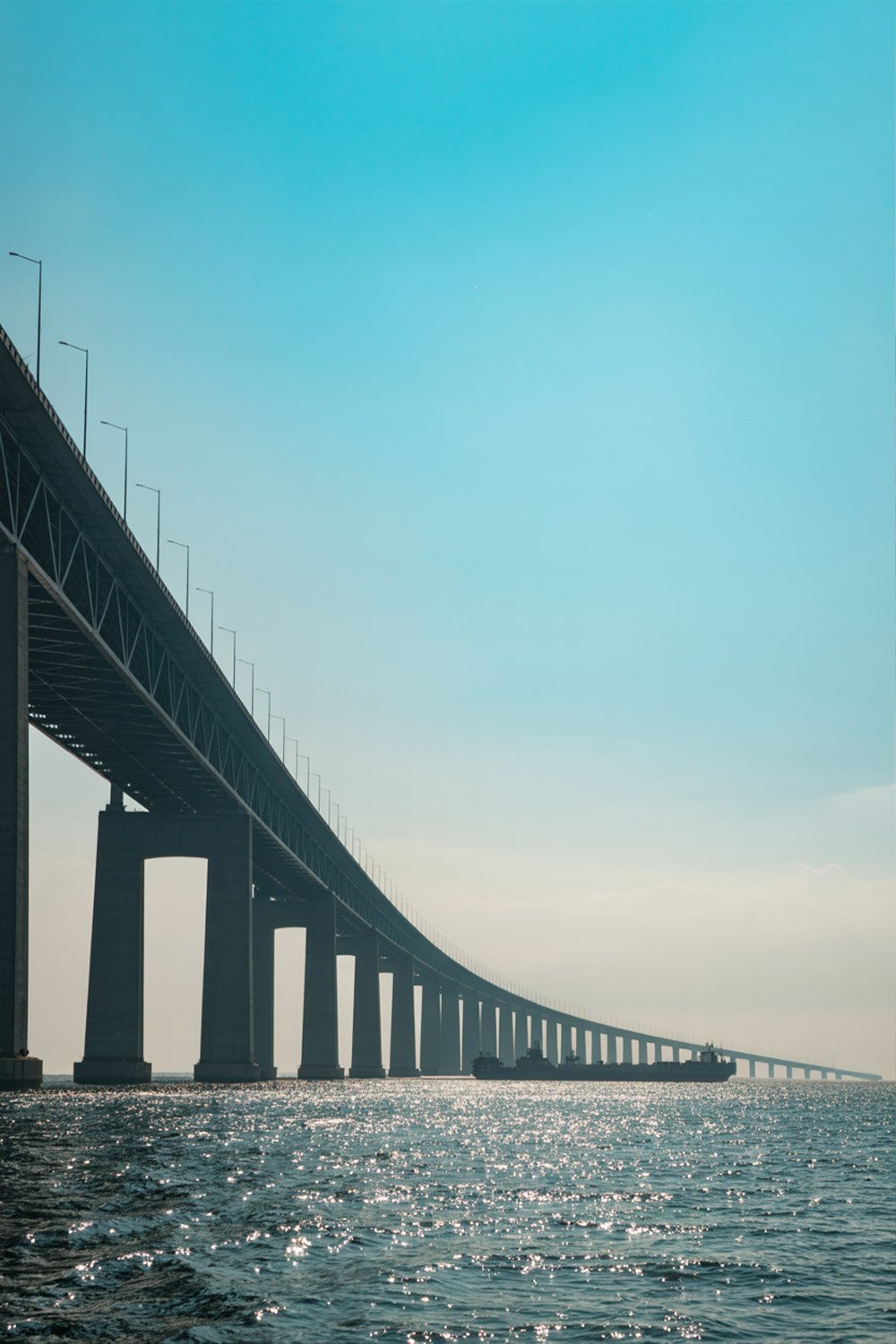
For travelers wondering what to see in Sweden that represents innovation and international cooperation, the Öresund Bridge delivers a memorable experience. Crossing the bridge offers spectacular views of the Baltic Sea, whether by train or car. The design itself, with its sleek lines and ingenious engineering solutions, has become an iconic part of the regional landscape.
The bridge has transformed the region by creating the Öresund Region, an integrated area connecting Swedish and Danish communities. This has facilitated cultural exchange, business opportunities, and tourism growth between the countries, making it more than just a transportation link – it’s a symbol of Scandinavian cooperation and forward-thinking design.
High Coast Sweden – Hiking Trails and Inland Travel Destinations
Along Sweden’s northeastern coastline lies one of the country’s most spectacular natural Sweden tourist attractions – the High Coast (Höga Kusten). This UNESCO World Heritage site features dramatic landscapes formed by the world’s highest land elevation since the last ice age. [SOURCE]
The High Coast is characterized by towering cliffs that rise majestically above the Gulf of Bothnia, creating breathtaking vistas that rank among top destinations Sweden has to offer for nature lovers. The region’s unique geography includes striking rock formations, secluded bays, and dense forests that create a paradise for outdoor enthusiasts.
Visitors can explore the High Coast’s natural beauty through an extensive network of hiking trails, including the famous High Coast Trail (Höga Kustenleden), which extends for 130 kilometers through varied terrain. The trail passes through diverse ecosystems and offers panoramic viewpoints like Slåttdalsskrevan, a massive crevice in the mountain, and Skuleberget, where hikers can ascend to spectacular summit views.

For a different perspective, kayaking along the coastline allows travelers to appreciate the towering cliffs from sea level and discover hidden beaches accessible only by water. The crystal-clear waters are perfect for paddling, swimming, and fishing during the summer months.
Throughout the High Coast region, quaint fishing villages and rural communities preserve traditional Swedish coastal culture, offering authentic experiences and locally sourced cuisine. The High Coast Bridge, with its impressive 1,800-meter span, serves as both a functional crossing and an architectural landmark that frames the dramatic landscape.
The Arctic North: Ice Hotel, Kiruna, and Abisko National Park
Sweden’s Arctic north offers some of the most unique and unforgettable experiences among must visit places in Sweden. This remote region welcomes adventurous travelers with extraordinary natural phenomena and cultural experiences found nowhere else. [SOURCE]
The world-famous Ice Hotel in Jukkasjärvi stands as a masterpiece of ephemeral art and innovation. Each winter, this remarkable structure is created entirely from ice harvested from the nearby Torne River. Artists from around the world transform blocks of crystal-clear ice into intricately carved rooms, sculptures, and furniture. Guests sleep on beds made of ice (topped with reindeer skins and thermal sleeping bags for warmth) in temperatures that hover around -5°C. The original Ice Hotel melts back into the river each spring, though a permanent ice experience is now available year-round in the Ice Hotel 365, kept frozen through solar-powered cooling technology.
Further north lies Kiruna, Sweden’s northernmost city and a gateway to Arctic adventures. This mining town is currently undergoing the remarkable process of being relocated due to mining operations – an engineering project that includes moving historic buildings like the wooden Kiruna Church, acclaimed for its striking architecture inspired by Sami design.
Kiruna serves as a base for experiencing two of nature’s most spectacular phenomena that make this region a standout among Sweden travel destinations. In summer, the Midnight Sun creates weeks where the sun never sets, bathing the landscape in a perpetual golden glow. Winter brings the magical Northern Lights (Aurora Borealis), painting the Arctic sky with swirling curtains of green, purple, and blue light.
For the ultimate Northern Lights viewing experience, travelers head to Abisko National Park. This pristine wilderness area benefits from a unique microclimate that creates a “blue hole” – a patch of clear sky even when surrounding areas are cloudy – making it one of the world’s most reliable places to witness the aurora. The Aurora Sky Station, accessible by chairlift, provides an elevated viewing platform far from light pollution.
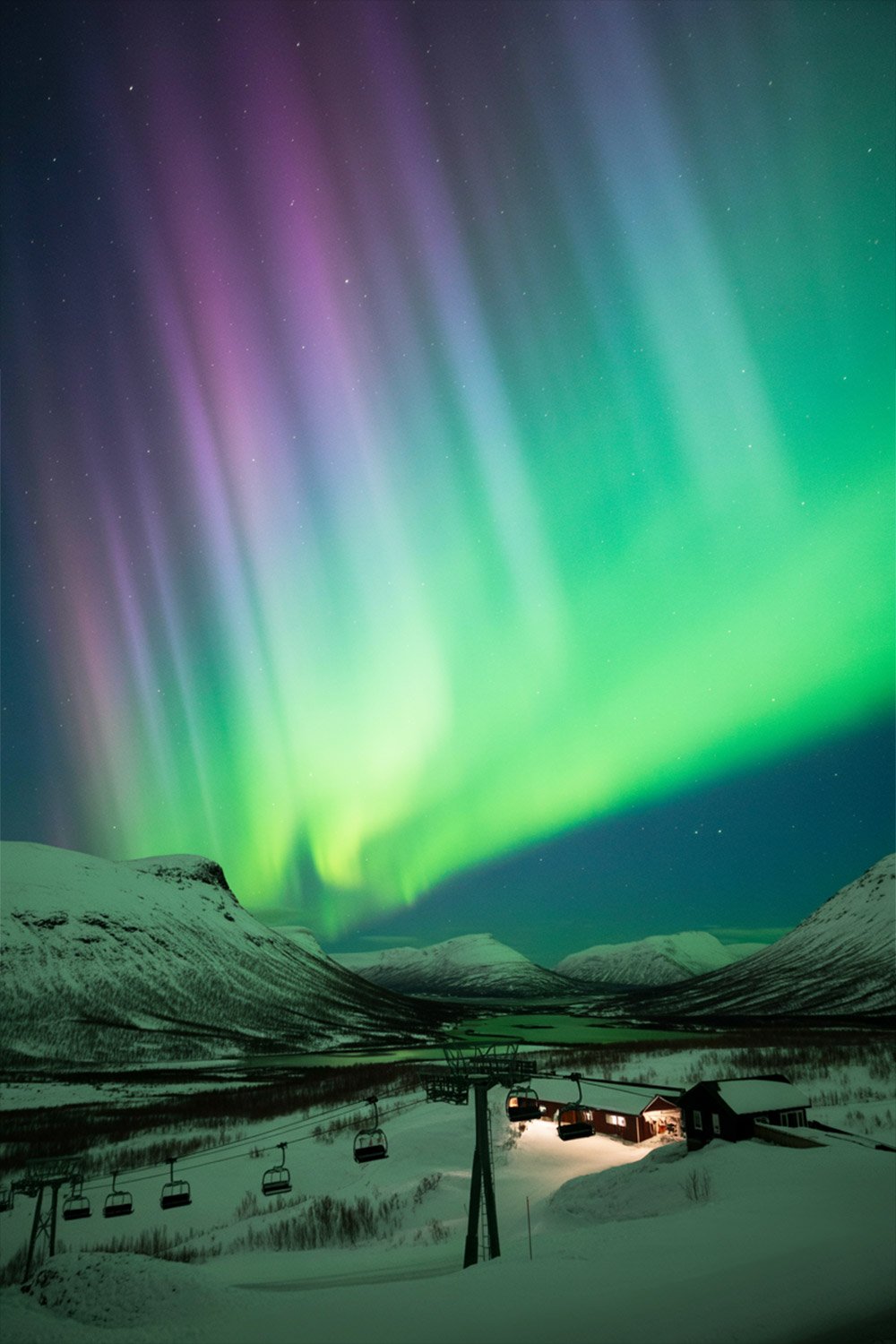
The Arctic region is also home to the indigenous Sami people, whose culture and traditions are deeply connected to the northern landscape. Visitors can learn about Sami heritage through cultural experiences including reindeer sledding, traditional crafts, and insights into their semi-nomadic way of life that has adapted to the harsh Arctic environment for thousands of years.
With its combination of natural wonders, cultural richness, and once-in-a-lifetime experiences, Sweden’s Arctic north represents the perfect destination for travelers seeking extraordinary adventures beyond the ordinary.
Frequently Asked Questions about Sweden Cities and Destinations
When is the best time to visit Sweden for weather, daylight, and seasonal activities?
The best time to visit Sweden depends on whether you prefer city sightseeing, outdoor activities, or seasonal highlights such as the Northern Lights. For long daylight hours, outdoor adventures, and festivals—including Midsommar—the summer months of June through August are ideal. For snow-covered landscapes, Northern Lights, and winter sports in Lapland, late November through March is best. Spring (April–May) and autumn (September–October) bring milder weather and fewer crowds.
How many days in Sweden are recommended to see both cities and nature?
To make the most of Sweden’s cities and natural destinations, plan at least one week—enough to explore Stockholm’s historic districts and cultural sites, plus a day or two in the archipelago or coastal towns. A 10-day itinerary allows you to add Gotland, castles such as Kalmar, and even northern regions like Lapland or the High Coast.
Which regions in Sweden have the top destinations for first-time visitors?
Begin with Stockholm’s Old Town, museums, and waterfront, then head to Gotland to explore Visby’s medieval heritage. From there, include Kalmar or Örebro for castles, Gothenburg and Malmö for coastal culture, and either archipelagos or Arctic landscapes depending on your travel itinerary.
Is Sweden safe for travelers, and how easy is transportation between destinations?
Sweden is a safe destination with reliable transport networks including trains, buses, and ferries that connect major tourist attractions. In cities and towns, English is widely spoken, and travel between regions is straightforward and efficient.
What should I pack for Sweden considering summer and winter travel?
Packing depends on whether you’re visiting Sweden in summer or winter, as conditions vary greatly. In summer and spring, bring light layers, waterproof outerwear, and a daypack for hiking or island-hopping. For winter travel in the north, pack warm base layers, insulated jackets, sturdy boots, and accessories for snow. Always carry an adapter for electronics, and in summer an eye mask can help with the long daylight hours.
Conclusion
Sweden offers a wide range of experiences, from the historic streets of Stockholm and the medieval charm of Visby to castles, bridges, and modern cityscapes. Its tourist attractions cover centuries of history and extend into some of Europe’s most striking natural environments.
Travelers interested in nature will find highlights in the Stockholm Archipelago, the hiking routes of the High Coast, and the Arctic landscapes around Kiruna and Abisko. Each of these destinations balances city access with opportunities for outdoor adventure.
When planning your Swedish journey, consider building an itinerary that mixes cities, coastal towns, and inland regions. The country’s efficient transportation system makes it possible to experience diverse destinations even in a short trip.
Alongside the locations featured here, Sweden has many other points of interest, including Uppsala, Lund, and Lapland’s wilderness areas. Together, they form some of the top places to visit in Sweden, whether you’re drawn to cultural heritage, coastal towns, or Arctic landscapes. If you are extending your trip, Sweden also connects seamlessly with Norway, Denmark, and Finland for a broader Scandinavian itinerary. For more travel inspiration and cinematic views, visit Pathfinders Travel on YouTube.

